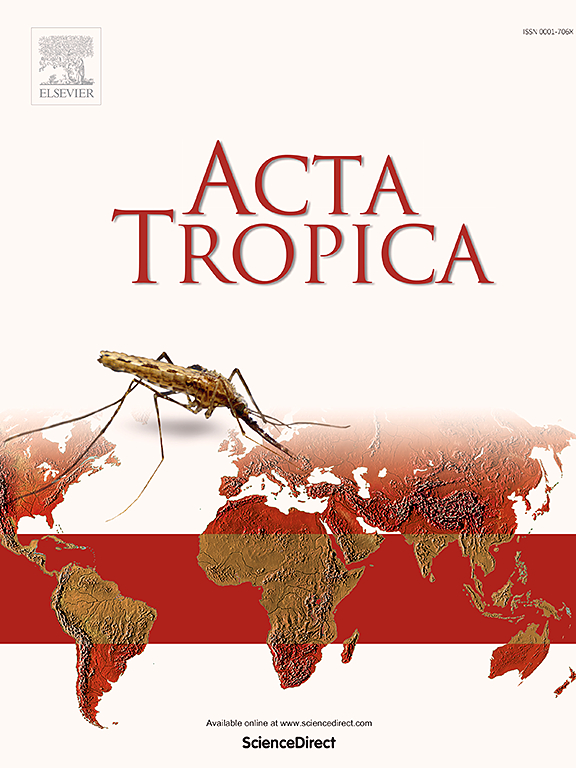Genetic diversity and prevalence of Blastocystis subtypes in Alborz Province, Iran: A molecular epidemiological study
IF 2.1
3区 医学
Q2 PARASITOLOGY
引用次数: 0
Abstract
The primary objective of this study was to evaluate the genetic diversity of Blastocystis. Additionally, it aimed to explore, for the first time in Iran, the potential association between Blastocystis infection and ABO blood groups. Another focus was to examine the relationship between Blastocystis subtypes and blood groups, an often overlooked risk factor, within the population of Alborz Province, Iran. 450 stool samples were collected from diagnostic facilities across Alborz Province between June 2022 and April 2024. The presence of Blastocystis was confirmed in 64 out of 450 samples (14.22 %) using the Nested PCR-RFLP technique. Among the 64 positive samples, nine (2 %) were classified as indeterminate.
Two distinct Blastocystis subtypes were identified in 55 isolates, accounting for 12.22 % of the total samples. ST1 was detected in 44 isolates (9.77 %), rendering it the most prevalent subtype, while ST3 was identified in 11 isolates (2.44 %). Phylogenetic trees were constructed using sequencing data and compared against genotypes available in GenBank. Significant differences between infected and non-infected individuals were observed regarding educational attainment, marital status, and blood type (p < 0.05). A significant association was found between ABO blood groups and the prevalence of Blastocystis infection (p = 0.019). However, when examining the correlation between Blastocystis subtypes (ST1 and ST3) and ABO blood groups, no significant overall association was observed. Nonetheless, specific associations were found for blood groups O+ and B-, with subtype ST1 being more prevalent in these groups.

求助全文
约1分钟内获得全文
求助全文
来源期刊

Acta tropica
医学-寄生虫学
CiteScore
5.40
自引率
11.10%
发文量
383
审稿时长
37 days
期刊介绍:
Acta Tropica, is an international journal on infectious diseases that covers public health sciences and biomedical research with particular emphasis on topics relevant to human and animal health in the tropics and the subtropics.
 求助内容:
求助内容: 应助结果提醒方式:
应助结果提醒方式:


